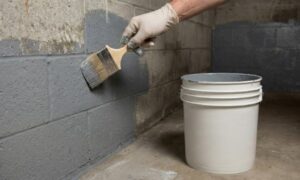With their sleek designs and state-of-the-art amenities, yachts represent the epitome of luxury and adventure on the high seas. At the heart of many modern yachts lies fiberglass, a versatile material prized for its strength, durability, and versatility. However, like any yacht component, fiberglass requires proper maintenance to ensure longevity and peak performance.
This article will provide a comprehensive overview of yacht fiberglass repairs and maintenance, covering topics such as understanding fiberglass properties, common issues and repair techniques, advanced maintenance strategies, essential tools and materials, maintenance tips, and long-term care considerations.
Whether you’re a seasoned yacht owner or a novice enthusiast, this guide will equip you with the knowledge and skills needed to keep your vessel in pristine condition. In this comprehensive guide, we will delve deep into the world of yacht fiberglass repairs and maintenance, exploring everything from the properties of fiberglass to advanced repair techniques and long-term care strategies.
Fiberglass in Yacht Construction
Fiberglass, also known as glass-reinforced plastic (GRP), is a composite material composed of fine glass fibers embedded in a polymer matrix. In yacht construction, fiberglass is widely used for its lightweight, corrosion-resistant, and high-strength properties. Fiberglass allows yacht designers to create sleek and aerodynamic hulls that glide effortlessly through the water while providing structural integrity and durability.
Importance of Proper Maintenance for Yacht Longevity
Proper maintenance of fiberglass is crucial for preserving the structural integrity and aesthetic appeal of a yacht. Neglecting fiberglass maintenance can lead to costly repairs, compromised safety, and diminished resale value. By implementing a regular maintenance routine and addressing issues promptly, yacht owners can extend the lifespan of their vessels and ensure they remain in top condition for years to come.
Yacht Fiberglass
Yacht fiberglass is a fundamental component of modern yacht construction, renowned for its exceptional strength, durability, and versatility. Fiberglass, also known as glass-reinforced plastic (GRP), is a composite material composed of fine glass fibers embedded in a polymer matrix. In yacht construction, fiberglass is utilized for its lightweight properties, allowing designers to create sleek and aerodynamic hulls that glide effortlessly through the water.
Additionally, fiberglass offers excellent resistance to corrosion from saltwater and harsh marine environments, making it ideal for long-term use in the open seas. Common types of fiberglass used in yacht construction include woven roving fiberglass for hulls and chopped strand mat fiberglass for bulkheads and interior components.
Understanding the properties of yacht fiberglass is essential for yacht owners and enthusiasts, as it enables them to appreciate the material’s strengths and limitations and make informed decisions regarding maintenance while looking for fiberglass repair Vancouver.
Properties of Fiberglass in Yacht Construction
Fiberglass offers exceptional strength-to-weight ratio, flexibility in design, and corrosion resistance, making it an ideal material for yacht construction. Its inherent properties contribute to the structural integrity and performance of yachts in various sea conditions. Fiberglass hulls are lightweight yet incredibly strong, allowing for smooth and efficient navigation through the water. Additionally, fiberglass is highly resistant to corrosion from saltwater and harsh marine environments, making it well-suited for long-term use in the open seas.
Common Types of Fiberglass Used
Yachts may utilize different types of fiberglass, each offering specific characteristics suited to different parts of the vessel. Woven roving fiberglass, for example, is commonly used in hull construction for its high strength and impact resistance.
Chopped strand mat fiberglass, on the other hand, is often used for bulkheads and interior components due to its ease of molding and cost-effectiveness. Unidirectional fibers may be used in areas requiring additional reinforcement, such as keels and structural supports.
Factors Leading to Fiberglass Damage
Fiberglass damage can result from various factors such as impact, abrasion, exposure to harsh marine environments, osmotic blistering, and improper maintenance practices. The impact from collisions with floating debris or docking mishaps can cause dents, cracks, and fractures in fiberglass hulls.
Similarly, prolonged exposure to saltwater, UV radiation, and temperature fluctuations can degrade the protective gel coat layer, leading to osmotic blistering and surface degradation. Poor maintenance practices, such as neglecting regular cleaning and waxing or using abrasive cleaning agents, can accelerate fiberglass deterioration and compromise its structural integrity.
Common Fiberglass Issues
Despite its durability, yacht fiberglass is susceptible to various issues that can compromise the integrity and performance of a vessel. Common fiberglass issues include gelcoat damage, hull blisters, delamination, and stress cracks. Gelcoat damage, such as scratches and chips, can occur due to impact, UV exposure, or poor application, requiring repair and preventive measures to maintain the aesthetic appeal of the yacht.
Hull blisters, caused by osmotic pressure, can lead to water intrusion and structural damage if left untreated, necessitating preventive coatings and repair techniques. Delamination, the separation of fiberglass layers, may result from water intrusion or manufacturing defects, requiring thorough inspection and repair to ensure structural integrity. Stress cracks, caused by flexing and structural fatigue, can compromise the hull’s strength and lead to further damage if not addressed promptly.
Understanding these common fiberglass issues allows yacht owners to identify and address problems early, preventing costly repairs and preserving the longevity of their vessels.
1. Gelcoat Damage: Causes and Solutions
Gelcoat damage, such as scratches, chips, and crazing, can occur due to impact, UV exposure, or poor application. Repair techniques may include sanding, filling, and reapplication of the gel coat. Small scratches and chips can often be buffed out or filled with gelcoat repair kits, while more extensive damage may require professional repair services. Preventive measures such as applying UV-resistant wax, or polymer sealants can help protect the gel coat layer and prevent future damage. Anchoring these methods with the help of strong mms expertise ensures the longevity of your vessel’s appearance and structural integrity.
2. Hull Blisters: Prevention and Repair Techniques
Hull blisters, caused by osmotic pressure, can compromise the integrity of the hull and lead to water intrusion and structural damage. Prevention measures include applying barrier coatings and epoxy-based bottom paints to create a protective barrier against moisture ingress. Repair techniques involve drying out the affected area, grinding away damaged gel coat and laminate layers, and filling the voids with epoxy resin and fiberglass laminate. Proper hull maintenance, including regular cleaning and inspection, is essential for early detection and prevention of blister formation.
3. Delamination: Identifying and Fixing the Problem
Delamination, the separation of fiberglass layers, can result from water intrusion, impact damage, or manufacturing defects. Identification involves tapping tests and visual inspection for areas of softness or delamination bubbles. Repair techniques range from drying out the affected area and re-bonding the layers with epoxy resin to replacing damaged sections of laminate. Properly addressing delamination issues requires thorough drying, cleaning, and preparation of the affected area to ensure a strong and durable bond.
4. Stress Cracks: Causes and Effective Repair Methods
Stress cracks, caused by flexing and structural fatigue, may appear in high-stress areas such as bulkheads, transoms, and keels. These cracks can compromise the structural integrity of the yacht and lead to water intrusion and further damage if left untreated. Repair methods involve grinding out the cracks, filling them with epoxy resin and fiberglass cloth, and reinforcing the affected area with additional layers of laminate. Properly addressing stress cracks requires identifying the underlying cause, such as structural weaknesses or excessive loads, and reinforcing the affected area to prevent future cracking.
Advanced Fiberglass Maintenance
Advanced fiberglass maintenance involves addressing complex issues such as osmotic blistering and structural damage to ensure the long-term integrity of a yacht. Osmotic blistering occurs when water penetrates the gelcoat layer and reacts with the underlying laminate, forming bubbles or blisters on the surface.
Repairing osmotic blistering requires thorough drying, grinding, and filling with epoxy resin and fiberglass laminate to restore the hull’s integrity. Structural fiberglass damage, such as delamination or fractures, may necessitate additional reinforcement with additional layers of fiberglass cloth and resin. Professional yacht repair specialists have the expertise and equipment needed to diagnose and repair advanced fiberglass issues effectively. Seeking professional assistance for complex repairs ensures that yacht owners receive the highest standard of care and attention to detail, preserving the value and performance of their vessels for years to come.
1. Dealing with Osmotic Blistering
Osmotic blistering occurs when water penetrates the gelcoat layer and reacts with the underlying laminate, causing bubbles or blisters to form on the surface. Properly addressing osmotic blistering requires thorough drying, grinding away damaged gelcoat and laminate layers, and filling the voids with epoxy resin and fiberglass laminate. Preventive measures such as applying barrier coatings and epoxy-based bottom paints can help mitigate the risk of blister formation and protect the hull from moisture ingress.
2. Repairing Structural Fiberglass Damage
Structural fiberglass damage, such as delamination or fractures in the laminate, may necessitate more extensive repairs to ensure the structural integrity of the yacht. Repair techniques may involve laminating additional layers of fiberglass cloth and resin to reinforce the affected area and restore its strength and stiffness.
Professional yacht repair specialists have the expertise and equipment needed to assess the extent of structural damage and recommend appropriate repair solutions. Properly repairing structural fiberglass damage requires meticulous preparation, application, and curing of repair materials to ensure a strong and durable bond.
3. Seeking Professional Assistance for Complex Repairs
Complex fiberglass repairs, such as extensive delamination or structural damage, may require the expertise of professional yacht repair specialists to ensure proper assessment and resolution. These specialists have the knowledge, skills, and equipment needed to diagnose and repair a wide range of fiberglass issues, from minor cosmetic repairs to major structural reinforcement. By enlisting the services of experienced professionals, yacht owners can ensure their vessels receive the highest standard of care and attention to detail.
Tools and Materials for Fiberglass Repairs
Essential tools for fiberglass repairs include sandpaper, grinding tools, brushes, rollers, and safety equipment such as gloves, goggles, and respirators. Sandpaper is used to smooth out rough edges and prepare the surface for bonding while grinding tools such as rotary sanders or angle grinders are used to remove damaged gelcoat and laminate layers. Brushes and rollers are used to apply epoxy resin and fiberglass cloth, ensuring proper adhesion and coverage. Safety equipment such as gloves, goggles, and respirators protect against skin irritation, eye injury, and inhalation of harmful fumes during the repair process.
Types of Fiberglass Materials Required
Fiberglass materials for repairs may include woven roving, chopped strand mat, fiberglass cloth, resin, catalyst, and gel coat. Woven roving fiberglass is a heavy-duty fabric used for reinforcing structural components and laminating multiple layers of fiberglass cloth. Chopped strand mat fiberglass is a versatile material used for filling voids and building up layers of laminate.
Fiberglass cloth is used for wrapping and reinforcing complex shapes and contours. Resin serves as the bonding agent that holds the fiberglass layers together, while the catalyst initiates the curing process. Gelcoat is applied as a protective surface layer to provide UV resistance and an aesthetic finish.
Safety Precautions When Working with Fiberglass
Safety precautions when working with fiberglass are essential to protect against skin irritation, eye injury, and inhalation of harmful fumes. Proper ventilation is crucial to ensure adequate airflow and minimize exposure to airborne particles and vapors. Protective clothing such as gloves, goggles, and long-sleeved shirts should be worn to prevent skin contact with resin and fiberglass fibers.
Respirators equipped with organic vapor cartridges or particulate filters provide additional protection against inhalation of fumes and dust. Working in a well-ventilated area and following safety guidelines for handling hazardous materials minimize the risk of accidents and exposure to harmful substances.
Maintenance Tips for Yacht Fiberglass
Maintaining yacht fiberglass is essential for preserving its appearance and performance over time. Routine maintenance tasks include regular cleaning, waxing, and inspection for signs of damage. Cleaning the hull with mild detergent and water removes dirt, salt, and debris that can cause abrasion and surface degradation.
Applying UV-resistant wax or polymer sealants provides a protective barrier against UV radiation and prevents oxidation of the gelcoat layer. Inspecting the hull for cracks, blisters, or delamination allows for early detection and repair before issues escalate. Preventive measures such as applying protective coatings and installing sacrificial anodes help mitigate the risk of fiberglass damage. Establishing regular maintenance schedules and keeping detailed records of maintenance activities ensures ongoing care
1. Routine Maintenance
Regular cleaning and waxing help protect fiberglass surfaces from UV damage and saltwater corrosion. Routine inspections for cracks, blisters, and delamination allow for timely repairs and prevention of further damage. Cleaning the hull with mild detergent and water removes dirt, salt, and debris that can cause abrasion and surface degradation. Applying UV-resistant wax or polymer sealants provides a protective barrier against UV radiation and prevents oxidation of the gelcoat layer. Inspecting the hull for signs of damage, such as cracks, blisters, or soft spots, allows for early detection and repair before issues escalate.
2. Preventive Measures
Applying protective coatings such as wax or polymer sealants helps maintain the integrity of fiberglass surfaces and prolongs their lifespan. Regular checks, both in and out of season, allow for early detection of issues and proactive maintenance. Inspecting the hull for signs of damage, such as cracks, blisters, or delamination, allows for prompt repair before issues escalate.
Applying bottom paint or anti-fouling coatings protects the hull from marine growth and prevents fouling of underwater surfaces. Installing sacrificial anodes or impressed current systems provides cathodic protection against galvanic corrosion and electrolysis.
3. Sealing and Caulking
Ensuring that all seams, joints, and fittings on the yacht are properly sealed and caulked helps prevent water intrusion and potential damage to the fiberglass structure. Regularly inspecting and resealing areas such as hatches, windows, and deck fittings with marine-grade sealant or caulk helps maintain a watertight seal and prevents leaks.
4. Dealing with Stubborn Stains
Stubborn stains, such as rust, oil, or bird droppings, can detract from the appearance of fiberglass surfaces and may require special removal treatment. Using a mild solvent or specialized fiberglass stain remover, carefully spot-treat the affected areas, following the manufacturer’s instructions. Avoid abrasive cleaners or harsh chemicals that could damage the gel coat or underlying fiberglass.
5. Preventing Corrosion and Galvanic Corrosion
Protecting the yacht’s fiberglass surfaces from corrosion is essential for maintaining their structural integrity and appearance. Installing sacrificial anodes or impressed current systems helps prevent galvanic corrosion, a common issue in marinas with multiple vessels. Regularly inspecting and replacing sacrificial anodes as needed ensures ongoing protection against corrosion and extends the lifespan of the yacht’s fiberglass components.
Long-Term Yacht Fiberglass Care
Fiberglass involves proactive measures to protect against environmental damage and maintain the vessel’s appearance and performance. Storage considerations, such as sheltered vs. exposed storage, impact the extent of fiberglass protection from UV radiation, moisture, and temperature fluctuations.
Winterization procedures, including draining water systems, stabilizing fuel, and applying protective coatings, safeguard yachts during the off-season and prevent damage from freezing temperatures and moisture. Regular maintenance schedules ensure ongoing care and preservation of yacht fiberglass, extending its lifespan and maintaining its value over time.
By implementing these long-term care strategies, yacht owners can ensure that their vessels remain in top condition for years to come, allowing for continued enjoyment and adventure on the high seas.
1. Storage Considerations: Sheltered vs. Exposed
Sheltered storage helps protect yachts from environmental elements and reduces the risk of fiberglass damage. Alternatives such as shrink-wrapping or custom covers provide additional protection for yachts stored outdoors. Indoor storage facilities offer optimal protection against UV radiation, moisture, and temperature fluctuations, prolonging the lifespan of fiberglass surfaces and reducing the need for repairs. Outdoor storage facilities may expose yachts to harsh environmental conditions such as UV radiation, saltwater spray, and temperature extremes, increasing the risk of surface degradation and corrosion.
2. Winterization Procedures: Protecting Your Yacht During Off-Season
Winterization procedures, including draining water systems, stabilizing fuel, and applying protective coatings, help safeguard yachts during the off-season and prevent damage from freezing temperatures and moisture. Draining water from the engine cooling system, bilges, and freshwater tanks prevents freezing and damage to plumbing components. Stabilizing fuel with fuel stabilizer additives prevents degradation and varnish formation during storage. Applying protective coatings such as wax or polymer sealants provides a barrier against moisture ingress and UV radiation. Covering the yacht with a custom cover or shrink-wrap film protects against snow, ice, and debris accumulation.
3. Regular Maintenance Schedules: Planning for the Long-Term
Establishing regular maintenance schedules ensures ongoing care and preservation of yacht fiberglass, extending its lifespan and maintaining its value over time. Creating a maintenance checklist with scheduled tasks and inspection intervals helps track maintenance activities and ensures nothing is overlooked. Scheduling routine inspections by qualified technicians allows for professional assessment and repair of any issues before they escalate.
4. UV Protection
Ultraviolet (UV) radiation from the sun can cause degradation and discoloration of fiberglass surfaces over time. Apply UV-resistant wax or polymer sealants to the gel coat layer to provide a protective barrier against UV damage. Additionally, consider installing sunshades, covers, or awnings to shield the yacht’s fiberglass surfaces from direct sunlight when not in use, especially during prolonged periods of storage or mooring.
5. Surface Protection During Maintenance
When performing maintenance or repair work on the yacht, take precautions to protect the fiberglass surfaces from damage or contamination. Use protective coverings or masking tape to shield adjacent areas from abrasive tools or chemicals. Avoid using abrasive cleaning agents or tools that could scratch or dull the fiberglass surfaces. After completing maintenance tasks, thoroughly clean and polish the fiberglass to restore its shine and protective properties.
6. Professional Inspection and Refurbishment
Periodically enlist the services of professional yacht repair specialists to conduct thorough inspections and refurbishments of the yacht’s fiberglass components. These experts can assess the condition of the fiberglass, identify any underlying issues or weaknesses, and recommend appropriate repairs or refurbishments. Professional refurbishment services may include re-gel coating, re-laminating, or refinishing fiberglass surfaces to restore their appearance and structural integrity.
To Wrap Up
Proper maintenance of yacht fiberglass is essential for preserving the beauty, integrity, and performance of a vessel. By understanding the properties of fiberglass, identifying common issues, employing preventive measures, and adhering to maintenance best practices, yacht owners can ensure their vessels remain in top condition for years to come. Whether performing routine upkeep or addressing advanced repairs, investing in fiberglass maintenance is an investment in the long-term enjoyment and value of a yacht. With the knowledge and skills gained from this comprehensive guide, yacht owners can confidently navigate the waters and enjoy many years of smooth sailing ahead.
For more information, you can content our website:
Owner Operator: Christopher Smith
778-939-9405
415 Esplanade W, North Vancouver, BC V7M 1A6


































